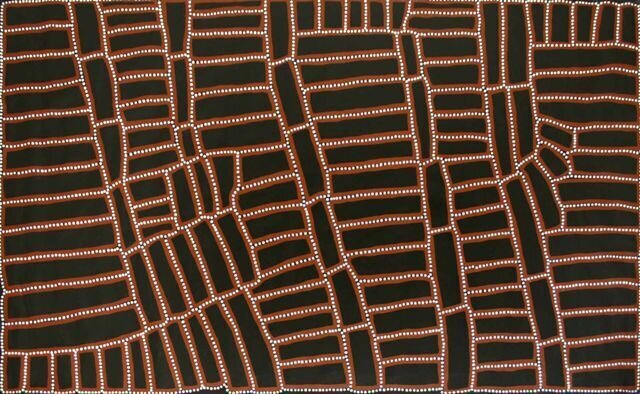Tingari Cycle, 2000 by Walala Tjapaltjarri, 130x210cm Cat 5276WT
Walala Tjapaltjarri's "Tingari Cycle, 2000" is a powerful piece rooted in his ancestral land of Lake MacKay. This artwork features bold iconography that serves as a microscopic map of Lake MacKay, a vast salt lake straddling the Northern Territory and Western Australia. Walala's Pintupi family, known as "The Pintupi Nine," lived a traditional, nomadic hunter-gatherer lifestyle with no European contact until 1984, when they made headlines as "The Last of the Nomads."
Walala began painting in 1997, introduced by his internationally renowned painter brother, Warlimpirrnga. Initially, he adhered to the classical Tingari style but soon developed a unique visual language to depict his sacred stories and landscapes. His use of rectangles creates a map that is both physical and spiritual, detailing sacred sites such as Wilkinkarra (Lake MacKay), Maruwa, Yarrawangu, Tarrku, and Nyami. These sites hold deep significance, as they are part of the journeys undertaken by Tingari ancestors during the Creation Era, who sang the world into existence.
Today, Walala Tjapaltjarri is celebrated as a successful artist and a strong cultural figure, with his work offering an intimate glimpse into the sacred topography and spiritual heritage of his people.

